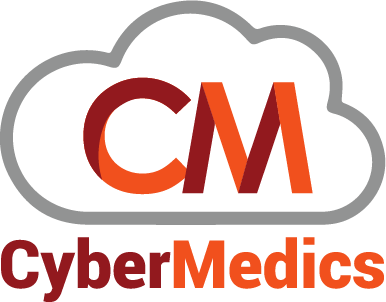
How To Implement Secure Coding Standards In Modern Software Development
Organizations lost an average of $4.35 million from software security breaches in 2022. Vulnerable code was the biggest problem that led to 70% of these attacks. Modern software security depends on secure coding standards. These standards give developers clear guidelines that help prevent common vulnerabilities and protect sensitive data.
The following guide shows you how to implement secure coding practices in development teams and projects. You will learn about core security principles and find the best ways to train development teams. The guide explains how to make use of static code analysis tools that prevent vulnerabilities. We also show you practical ways to handle common compliance challenges and build lasting success in secure software development.
Understanding Secure Coding Standards
Secure coding standards are the life-blood of modern software security that provide developers with clear guidelines to create resilient applications. These standards offer a detailed set of rules and best practices to prevent security vulnerabilities during the software development lifecycle.
What are secure coding standards?
Secure coding standards provide documented guidelines and rules that help developers write code resistant to security threats and vulnerabilities. These standards represent a move toward making developers directly responsible for security instead of relying only on security teams. A protective layer scans existing and new code in repositories continuously to ensure compliance with industry-proven security practices.
Why are they important?
Secure coding standards are vital since research shows that coding errors cause up to 90% of software security problems. These standards serve several essential purposes:
Vulnerability Prevention: Developers can eliminate common coding errors that might compromise software security
Cost Reduction: Teams save money by detecting security issues early instead of fixing vulnerabilities later
Compliance: Organizations meet regulatory requirements and industry standards effectively
Quality Assurance: Development teams maintain consistent security practices throughout the project
Key secure coding standards (CERT, OWASP, etc.)
Several long-standing secure coding standards guide the software industry. The OWASP (Open Web Application Security Project) stands as a globally recognized authority on web application security that provides detailed guidelines through its Top 10 list of critical security risks. The CERT Division of the Software Engineering Institute has created language-specific secure coding standards for C, C++, Java, and other programming languages.
The Common Weakness Enumeration (CWE) system, under MITRE’s management, keeps a detailed list of software weaknesses. The CWE Top 25 spotlights the most dangerous software errors. These standards adapt continuously to tackle emerging threats and vulnerabilities. The latest version of CWE Top 25 came out in 2023.
Software security remains an engineering challenge that starts from a product’s original concept and runs through its deployment lifespan. These standards reflect best practices learned over the last several years. They want to strengthen code by eliminating bad practices and promoting techniques that build more resilient applications.
Implementing Secure Coding Practices
A systematic approach with clear guidelines, complete training, and strong tools makes secure coding practices successful. Your organization needs a solid foundation that helps developers write secure code consistently and maintain development speed.
Establishing coding guidelines
Organizations need clear, secure coding guidelines that arrange with industry standards like OWASP and CERT. The guidelines should match the organization’s technology stack and security requirements. Essential elements that make guidelines work include:
Input validation protocols
Authentication and authorization requirements
Data protection standards
Error handling procedures
Secure configuration management
Training developers on secure coding
Developer training is the life-blood of successful secure coding implementation. Organizations should create a detailed training program that has both original and ongoing education. Security champions programs work best especially when you have developers with security expertise who connect development and security teams.
These successful training approaches include:
Hands-on coding exercises
Real-life vulnerability examples
Language-specific security patterns
Regular security awareness updates
Using static code analysis tools
Static code analysis tools offer automated security scanning to detect vulnerabilities early in the development cycle. These tools examine source code without execution and flag security issues before production deployment. Modern development teams merge these tools with their CI/CD pipelines to validate security continuously.
Performing code reviews
Code reviews serve as a vital defense against security vulnerabilities. Teams must implement a well-laid-out review process that combines automated scanning with manual inspection. Reviewers need to focus on security implications and maintain a consistent quality bar for all code changes, whatever the developer’s experience level.
Organizations need a fundamental change in thinking to implement secure coding practices. Security teams should select developer-friendly tools that blend naturally with existing processes to avoid friction that might slow adoption. Organizations can deliver secure software without compromising development speed by making security a core part of the development process rather than an afterthought.
Overcoming Implementation Challenges
Companies that implement secure coding standards face many roadblocks that slow down their progress and adoption. A clear understanding of these challenges and strategies to overcome them is vital for successful implementation.
Resistance to change
Development teams often push back against new security practices. Tight deadlines and pressure to ship features create this resistance. Organizations can balance security needs with development speed through adaptive security measures. Teams that value security succeed by educating members and explaining the importance of security protocols. Clear communication helps everyone understand the reasons behind security requirements.
Legacy code issues
Legacy codebases make it hard to implement modern security standards. These systems face problems with outdated technology, accumulated technical debt, and complex dependencies that are tough to upgrade. Teams can tackle these challenges by:
Running regular vulnerability assessments
Setting up reliable dependency management
Creating complete documentation
Building clear migration strategies
Making critical security updates a priority
Performance trade-offs
Finding the right balance between strong security features and high performance standards remains one of the most important challenges in modern software development. Companies need risk-based assessment strategies to strike this balance effectively. They should model threats for user scenarios of all types and integrate adaptive security measures that uphold both security and performance standards.
Maintaining standards long-term
A systematic approach helps maintain secure coding standards that last. Security automation is a vital part of upholding standards in the CI/CD pipeline. Teams should keep well-laid-out guidelines in private repositories that developers can review when needed.
Success depends on striking the right balance between current security needs and future maintenance. Teams should choose cloud-native infrastructure to optimize security and performance while documenting security protocols clearly.
Continuous improvement happens through security testing, penetration testing and code reviews. Teams must enhance loading speeds and user experience without compromising security. Regular security training and workshops help developers stay ahead of new threats and defense strategies.
Organizations can build a strong framework to manage secure coding standards when they implement these strategies carefully. Security should blend naturally into development instead of becoming an extra task or burden.
Conclusion
Secure coding standards serve as a vital shield against modern cyber threats that protect organizations from security breaches that can get pricey while ensuring strong application security. Organizations excel at implementing these standards by combining clear guidelines, detailed developer training, and automated security tools to build a strong security framework. This integrated approach prevents vulnerabilities and reduces the average $4.35 million cost per security incident by a lot. Secure coding has become a crucial investment for modern software development.
Success in secure coding implementation requires teams to adapt to emerging threats with steadfast dedication to security best practices. Development teams must balance security requirements with performance goals while they retain control of standards in their codebase. Protect Your Code from Modern Threats – find how our CyberProcess™ delivers detailed security and compliance in software development. Get started with CyberMedics today!
FAQs
What methods can be used to secure code in software development?
To secure code in software development, it is essential to follow several recommendations such as input validation, output encoding, robust authentication and password management, effective session management, stringent access control, best cryptographic practices, meticulous error handling and logging, and comprehensive data protection.
How are coding standards implemented in software development?
Implementing coding standards involves selecting industry-specific guidelines, focusing on code readability, avoiding the use of a single identifier for multiple purposes, adding comments, prioritizing documentation, processing data efficiently, and ensuring effective version control, collaboration, code review, and refactoring.
What guidelines should be followed to enhance security in the software development process?
To enhance security in the software development process, developers must adhere to secure coding practices such as input validation, secure data storage, and secure communication protocols. These practices are crucial for preventing common security vulnerabilities like SQL injection, cross-site scripting, and buffer overflow attacks.
What are secure coding standards?
Secure coding standards are guidelines that dictate the coding practices, techniques, and decisions developers should make while building software. These standards are designed to ensure that code is written in a way that minimizes security vulnerabilities, considering the various complexities and methods available in software development.
